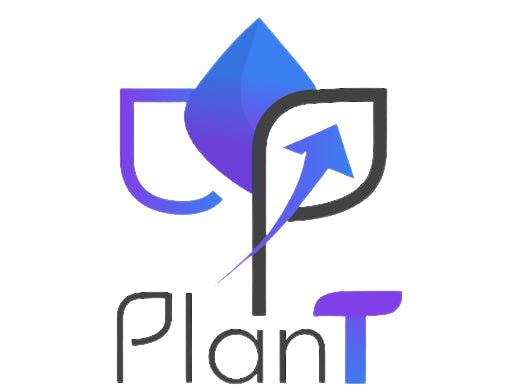See what they made, then learn more from IBM clients and business partners in Blockparty, our new webinar series. INBLOCK issues Metacoin cryptocurrency, which is based on Hyperledger Fabric, to help make digital asset transactions faster, more convenient and safer. A public blockchain is one that anyone can join and participate in, such as Bitcoin. Drawbacks might include substantial computational power required, little or no privacy for transactions, and weak security.
- The advancements of Blockchain are still young and have the potential to be revolutionary in the future; so, let’s begin demystifying this technology.
- Cryptocurrency transactions, it’s suitable for recording many other types of digital data and can be applied to a wide range of use cases.
- Blockchain has several uses, including cryptocurrency transactions, fiat transfers, and more.
- Technologically, Blockchain is a digital ledger that is gaining a lot of attention and traction recently.
- Mainstream misgivings about working with a system that’s open for anyone to use.
- The process of understanding and accessing the flow of crypto has been an issue for many cryptocurrencies, crypto exchanges and banks.
It has been argued that permissioned blockchains can guarantee a certain level of decentralization, if carefully designed, as opposed to permissionless blockchains, which are often centralized in practice. In May 2018, Gartner found that only 1% of CIOs indicated any kind of blockchain adoption within their organisations, and only 8% of CIOs were in the short-term “planning or active experimentation with blockchain”. For the year 2019 Gartner reported 5% of CIOs believed blockchain technology was a ‘game-changer’ for their business.
What Is Blockchain Technology?
Blockchain technology utilizes a P2P network of computers to securely process and store transactions in a digital database. Unlike traditional databases that rely on central authorities, blockchain completely removes the need for intermediaries. A blockchain is a decentralized ledger of all transactions across a peer-to-peer network.
It’s a bit of cryptographic math that makes the links between blocks virtually unbreakable. The transaction information is recorded and shared with the other computers in the blockchain network. Blockchain users.Participants with permissions to join the blockchain network and conduct transactions with other network participants. We examine some of the ways FS firms are using blockchain, and how we expect the blockchain technology to develop in the future. Blockchain isn’t a cure-all, but there are clearly many problems for which this technology is the ideal solution.
Public blockchains
Through a smart contract, developers can create a unique non-fungible token that represents ownership of a real-world asset such as a building, car, rare trading card, or more. Blockchains provide authenticity to asset ownership, transparent tracking of an asset’s life cycle, and global liquidity to previously illiquid assets. A private blockchain, as the name suggests, is a blockchain network that is not open to the public. Private blockchains are typically run by a single entity, such as a company, and are used for internal purposes and use cases. Since then, adoption of blockchain technology has gradually widened, and cryptocurrencies are used by an increasing number of people globally. Proof-of-work is the protocol used by a miner wishing to validate transactions and keep the network secure.
This capability has enabled an entirely new financial ecosystem of permissionless, transparent financial services known as decentralized finance . In a decentralized blockchain, there is no single central authority that can control the network. In decentralization,the decision-making power is distributed among a network of nodes that collectively validate and agree on the transactions to be added to the blockchain. This decentralized nature of blockchain technology helps to promote transparency, trust, and security. It also reduces the risk to rely on a single point of failure and minimizes the risks of data manipulation. These are digital, programmed contracts that automatically enact or document relevant events when specific terms of agreement are met.
Private Blockchain Networks
As mentioned, blockchain technology is being used far beyond just its roots in cryptocurrency — almost every modern industry is being morphed by the technology in some way. Blockchain is challenging the current status quo of innovation by letting companies experiment with groundbreaking technology like peer-to-peer energy distribution or decentralized forms for news media. Much like the definition of blockchain, the uses for the ledger system will only evolve as technology evolves. Every node has its own copy of the blockchain and the network must algorithmically approve any newly mined block for the chain to be updated, trusted and verified. Since blockchains are transparent, every action in the ledger can be easily checked and viewed, creating inherent blockchain security. Each participant is given a unique alphanumeric identification number that shows their transactions.

In Bitcoin, your transaction is sent to a memory pool, where it is stored and queued until a miner or validator picks it up. Once it is entered into a block and the block fills up with transactions, it is closed and encrypted using an encryption algorithm. Banks preferably have a notable interest in utilizing Blockchain Technology because it is a great source to avoid fraudulent transactions. Blockchain is considered hassle free, because of the extra level of security it offers. Some cryptocurrency developers are considering moving from the proof-of-work model to the proof-of-stake model.
Building Transactions into Blocks
For businesses, https://globalcloudteam.com/how-to-build-a-blockchain-10-simple-steps/ could be a radical departure from manual processes. An international ID blockchain, accessible anywhere in the world, allows people to prove their identity, connect with family members and even receive money without a bank account. If she chooses to sell the ticket, it’s assigned a new address, and the new owner gets a new private key. Overall, blockchain technology has many uses in both the crypto world and beyond, but it’s important to understand how it works before you utilize it. You can create your own blockchain (or build onto/modify an existing blockchain) if you have coding and/or advanced computer knowledge. By building your own blockchain, you can design your own cryptocurrency for others to trade.

We advocate and support the adoption of BSV blockchain technology worldwide. The BSV blockchain is designed to be tamper-proof, allowing for secure and verifiable transactions and record-keeping. Crypto assets can be used as a means of payments of insurance premiums or claims compensation in some jurisdictions. Some unit-linked life insurance products can also have crypto-assets as an underlying investment. Insurance undertakings could also potentially raise capital via Initial Coin Offerings.
Digital ID
It can connect to multiple blockchains, tracking multiple assets, so it can swap those assets as needed to execute the transaction. Here are some examples of how blockchain could hypothetically transform everyday transactions. Because blockchains establish trust, they provide a simple, paperless way to establish ownership of money, information and objects—like concert tickets.
